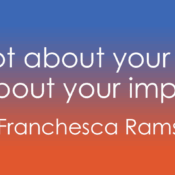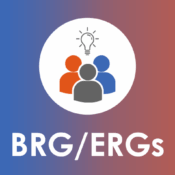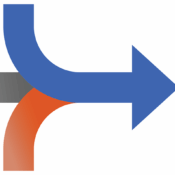
Disrupting the Status Quo: Accessibility as the Bare Minimum
This post was co-authored by Yael Lenga, research intern at 2axend, and Corey Axelrod, founder and CEO of 2axend.
---
As we celebrate the 30th anniversary of the passage of the Americans with Disabilities Act (ADA), it is imperative to recognize how much progress has been made since 1990 through the valiant efforts of advocacy groups.
Leveraging standards set forth by the ADA, advocacy groups representing the collective interests of the disability community have often chosen lawsuits as a means to effect change and establish legal precedents. The Deaf community is no exception.
In the case of Martinez et al v. Cuomo, a federal judge ordered New York Governor Andrew Cuomo to add sign language interpretation to COVID-19 press briefings or offer an official explanation for why his office could not do so. This opened up access to information vital to the health and safety of thousands of Deaf and hard of hearing New Yorkers. Additionally, through settlements with Harvard and the Massachusetts Institute of Technology, the National Association of the Deaf significantly raised digital accessibility standards, a necessity legislators couldn’t have predicted in 1990.
Although great advances have been made in recent years, it is critical to acknowledge there is much work yet to be done.
Why do these issues continue to occur decades after the passage of the ADA?
Sweeping federal legislation rarely, if ever, solves every problem immediately upon passage. Just like the Civil Rights Act of 1964 did not erase racism, the ADA has not eradicated systematic issues Deaf and hard of hearing individuals face.
Unfortunately, the ADA is not a recipe for equity. It establishes a minimum baseline of enforceable standards with a number of caveats and frames accessibility as a checklist of auxiliary aids and services that organizations need to provide in order to make the world an easier place for Deaf and hard of hearing individuals to navigate. Moreover, the ADA does not remove actual communication barriers and lacks any conditions mandating effective follow-through, let alone sufficient oversight to enforce its actual execution.
The ADA also leaves crucial decisions to organizations regarding which auxiliary aids and services they will provide to ensure effective communication takes place. This is especially concerning because the regulations outlined in the ADA are often read and interpreted by able-bodied individuals. Ineffective policies and procedures are then implemented with little insight from individuals who are Deaf and hard of hearing.
While ineffective communication anywhere is detrimental or even dangerous, its prevalence in healthcare has contributed to significant disparities in the delivery of services to millions of Deaf and hard of hearing individuals.
In a healthcare setting, every word is vital. Diagnosis and treatments hinge on mutual understanding between the provider and their patient. Ineffective communication poses a serious, possibly fatal, risk to the health and safety of Deaf and hard of hearing patients.
Contrary to widespread belief, no simple Band-Aid solution to ineffective communication exists. Within the Deaf community, there is a wide range of communication needs and preferences. Accommodations that fit one patient’s needs may not apply to the next.
Without sufficient awareness, however, hospitals and healthcare systems have been and continue to be selective with the auxiliary aids and services made available. In place of in person sign language interpreters, video remote interpreting (VRI) has been relied on almost exclusively by a number of healthcare providers with minimal regard for its ability to achieve effective communication for individuals who rely on interpretation services. Meanwhile, it’s rare to hear of a hospital that provides Communication Access Realtime Translation (CART), a captioning service that would immensely benefit non-signing Deaf and hard of hearing individuals. The recent need for telehealth has not made communication any easier. Providers are utilizing platforms that unfortunately cannot connect with a sign language interpreter or include captions.
While healthcare organizations may use the ADA as a guide to create what they perceive to be accessible environments or to maximize risk management and avoid litigation, the end result is often the same — encounters throughout the entire healthcare experience are not fully accessible.
Like many other Deaf and hard of hearing individuals, both of us have personal experiences with inaccessible healthcare organizations. We have been unable to make or receive video relay service (VRS) phone calls and text messages due to insufficient cellular and WiFi speeds in waiting areas and patients’ rooms. Even tasks as simple as ordering food from the cafeteria have been unnecessarily difficult. Our needs are often minimized or treated without much urgency, and it is frustrating to be given the runaround or transferred to multiple individuals when requesting sign language interpreters because staff members do not know internal protocol.
As America works to reform its overburdened healthcare system in the midst of COVID-19, there is no better time to analyze and address accessibility in healthcare and beyond.
Adjusting the way we address effective communication in healthcare requires understanding that adhering to ADA standards does not guarantee accessibility. Ultimately, the ADA’s guidelines are intended to protect people with disabilities from blatant discrimination, but offers little support for establishing a fully accessible environment.
At 2axend, we believe healthcare organizations should seek to inspire confidence in their ability to meet the communication needs of every patient.
We envision healthcare organizations proactively creating environments that allow for meaningful interactions throughout the entire healthcare experience, not solely during critical encounters. This includes Deaf and hard of hearing individuals having access to diverse options of readily available and fully functioning auxiliary aids and services, as well as a variety of methods to request said aids and services. Deaf and hard of hearing individuals should also be able to easily access web-based video content, including promotional and informational videos, without having to reach out to a healthcare provider to request these videos be captioned.
Additionally, patients should not have to struggle to access pertinent healthcare information due to ineffective technical solutions. To that end, healthcare providers should emphasize accessibility by requiring vendors to provide a Voluntary Product Accessibility Template (VPAT) as a part of the procurement process. Vendors that do not have baked-in accessibility features should automatically be crossed off the list for consideration.
The ADA also does nothing to rectify implicit and unconscious biases. Often, providers who are not trained in minimizing these biases will give culturally insensitive care. By addressing interpreters rather than the patient themselves or perpetuating harmful assumptions about Deaf and hard of hearing individuals, providers are subjecting their patients to microaggressions. When seeking treatment, a connection free of prejudice and misunderstanding must be established between providers and patients. This necessitates the need for regular training that details how individual and systematic biases can impact the delivery of patient-centric care to Deaf and hard of hearing patients. Providers must also have an understanding and appreciation of this population’s sociocultural experiences and their relevance in healthcare settings.
We also propose healthcare organizations listen to and actively implement feedback from Deaf and hard of hearing individuals. After all, if the opinions of Deaf and hard of hearing patients are not considered, they are in turn excluded from their own healthcare experience.
Over the past several months, we’ve run a #DeafInHealthcare campaign. The campaign has amplified the perspectives of Deaf and hard of hearing patients, adult children of Deaf adults (CODAs) and other family members of Deaf and hard of hearing individuals, and interpreters. By placing diverse experiences and perspectives in the spotlight, #DeafInHealthcare intends to raise awareness and educate current and aspiring healthcare professionals regarding the disparate experiences Deaf and hard of hearing individuals regularly encounter. Furthermore, the shared perspectives further purport the importance of building and implementing policies and procedures, as well as comprehensive training, enabling healthcare organizations to surpass the requirements set forth by the ADA and other legal statutes.
At 2axend, we are committed to supporting healthcare organizations in their journey to improve the healthcare experience for Deaf and hard of hearing individuals. It is our hope that healthcare organizations will meet us halfway and recognize it is time for them to go above and beyond the letter of the law, and work to embody the spirit of the law, to truly further progress towards a fully accessible world.



